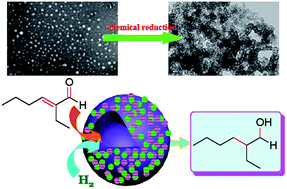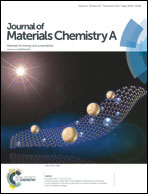Hollow Ni–Co–B amorphous alloy nanospheres: facile fabrication via vesicle-assisted chemical reduction and their enhanced catalytic performances†
Abstract
In this paper, we develop a simple vesicle-assisted chemical reduction approach for synthesizing hollow Ni–Co–B nanospheres. With various characterization techniques, the resulting Ni–Co–B nanospheres are identified as amorphous alloys with a hollow chamber. Coexistence of NiII and CoII species plays a significant role in fabricating hollow nanospheric structures, because only solid nanoparticles can be obtained in the presence of a mono-metallic precursor. During liquid-phase hydrogenation of 2-ethyl-2-hexenaldehyde, hollow Ni–Co–B catalyst displays significant bi-site catalysis from bimetals and delivers much greater activity as well as better selectivity than associated with the dense Ni–Co–B catalyst. Additionally, this catalyst is also easily handled in liquid-phase reactions due to its lower density and magnetic property. The material design concept presented in this work opens a new avenue for the development of hollow non-noble metallic nanospheres and will draw more attention in the foreseeable future.

- This article is part of the themed collection: 2014 Journal of Materials Chemistry A Hot Articles

 Please wait while we load your content...
Please wait while we load your content...